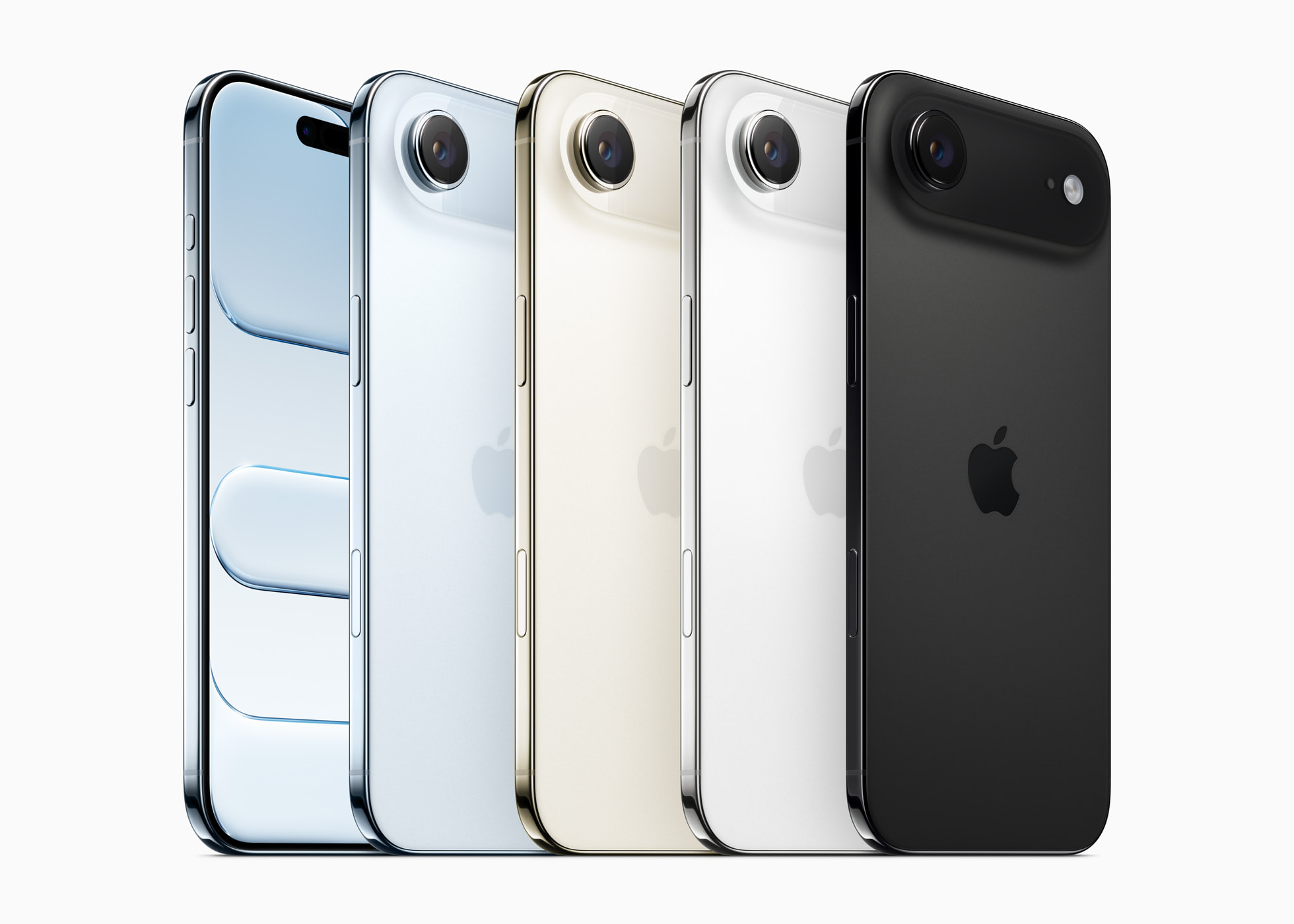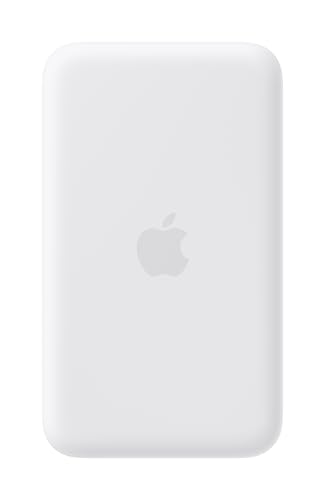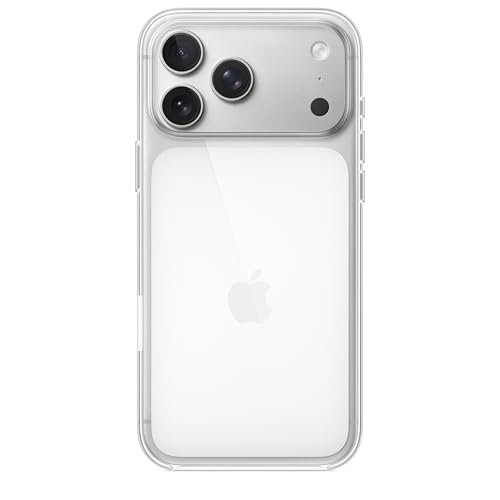The iPhone Air is what the people say they’ve been asking for: something new. This is the first iPhone in a long time that will truly shock you when you take it out of the box and hold it in your hand.
That means cutting a few things you’ve come to expect from the iPhone: the second speaker, the second (and third) rear cameras … but also, the thickness and weight. And the more time I spent with the iPhone Air, the more I appreciated what was still there: the super-bright and big display, the improved front camera and, most surprisingly, the battery life.
Here’s my experience switching from the iPhone 16 Pro to the iPhone Air. It’s a path I think you might enjoy taking, too. Keep reading or watch our video review.
This post contains affiliate links. Cult of Mac may earn a commission when you use our links to buy items.
iPhone Air review
The iPhone Air is an interesting new direction for Apple. It’s not a radical overhaul in terms of features, but it pushes the boundaries of hardware — and signals Apple’s focus going forward (foldables). The Air floats in the iPhone 17 lineup between the great-value iPhone 17 and the top-of-the-line iPhone 17 Pro, which is truly a professional tool.
It takes the spot where the iPhone 17 Plus might have been (Apple didn’t produce a Plus model this year). If you were thinking, “I don’t need the nicest phone, I just want a big screen and the best battery life,” Apple would point you to the iPhone 17 Pro Max. That, unfortunately, means that you have to pay extra — at least $1,200 — for features you might not use.
Over the last few years, it feels like Apple has been holding the balance of features, battery life, cameras and design at basically the same levels, resulting in a series of four phones every year that all look the same as each other and the same as the phones every year before and after.
The iPhone Air brings some diversity to the iPhone 17 lineup. It’s shocking at first that it lacks a lot of the things we have come to expect, but does it really lack anything we need?
With its radically slim design, the iPhone Air shakes up Apple's phone lineup. It comes with the same A19 Pro chip as the iPhone 17 Pro and uses Apple's N1 and C1X chips to enhance connectivity and efficiency.
- Killer new design with titanium frame is just 5.6 mm thin and weighs just 165 grams.
- 6.5-inch Super Retina XDR display with ProMotion up to 120Hz.
- Center Stage front camera for better selfies.
- Comes in four colors: space black, cloud white, light gold and sky blue.
- Battery life takes a bit of a hit.
- 48MP Fusion camera system, with 28 mm and 35 mm focal length lenses, is impressive but more limited than Pro models.
- Optical-quality telephoto lens is just 2x.
Table of contents: iPhone Air review
- Design
- Battery life
- Display
- Cameras
- The microphones … and speaker
- The chips
- Conclusion: The new flagship
- Bonus: iPhone Air accessories reviews
Design
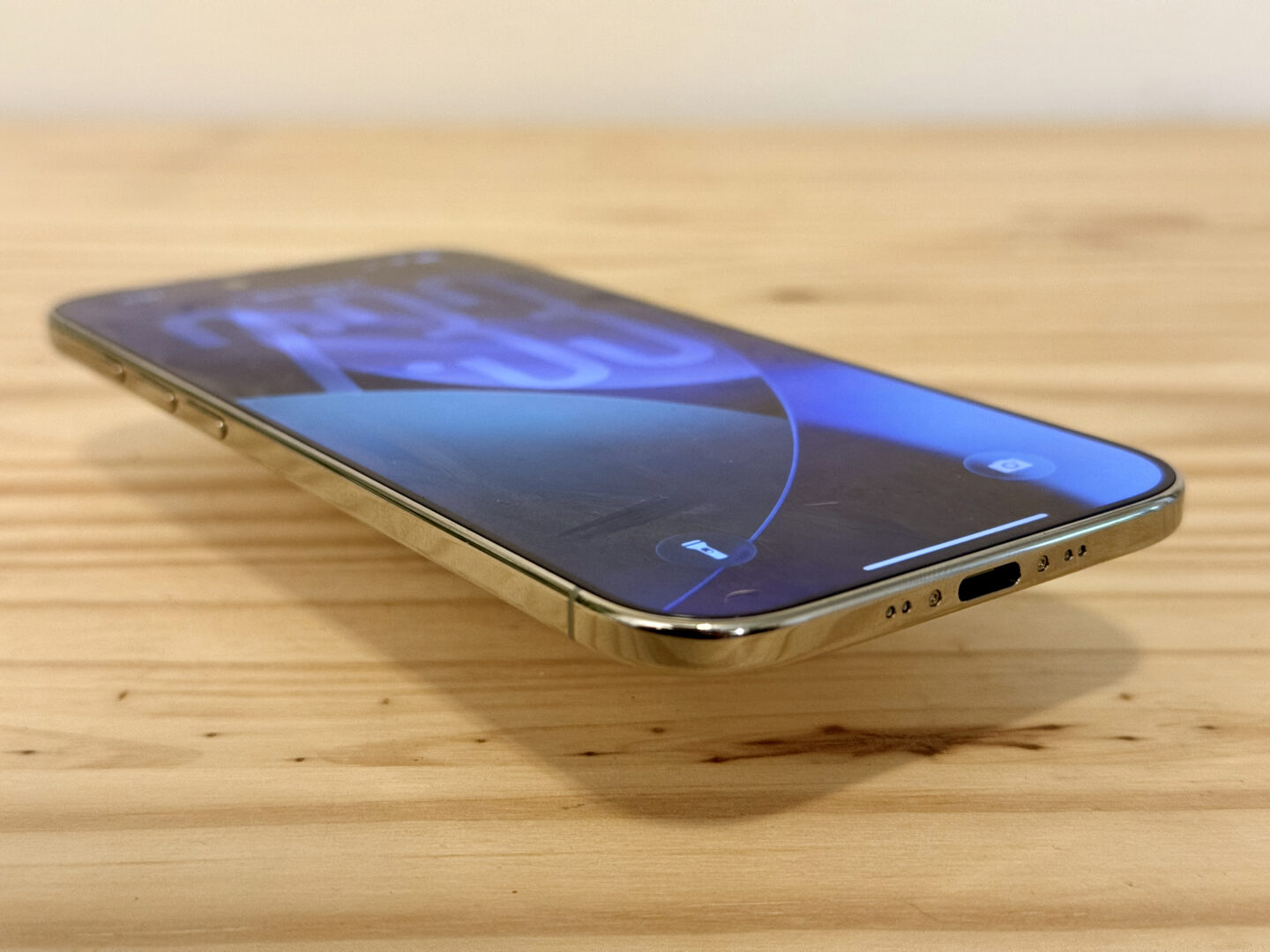
Photo: D. Griffin Jones/Cult of Mac
The iPhone Air is a radical and stunning design that looks like it’s from an alternate reality — one where Apple never stopped pursuing thinness. It’s like 10 years of thinnovation hit us all at once.
It technically has flat sides with rounded edges, just like the last few generations of iPhone, but it’s so thin that it feels like holding a credit card. It makes other phones feel like a bulky deck of cards.
It really feels as light as a feather, too. It’s only 17% lighter than my iPhone 16 Pro, but if I didn’t know that, I probably would have guessed 40%. Lying on your back, holding the iPhone Air above your face, you can hold it for much longer — and when you drop it, it doesn’t hurt as much.
It’s a bit of a trick, because most of the “phone” part of the iPhone Air sits in the large plateau that spans the width of the device’s backside. The whole thin part on the lower half of the phone is basically just battery, USB-C port, microphones and Taptic Engine. Unlike the iPhone 16e, which also has a single-camera setup, the iPhone Air’s camera protrudes quite a bit for that reason.
Holding the device horizontally is actually somewhat pleasant. The plateau feels like holding a camera grip.
I got the gold iPhone Air, which you probably missed because it literally looks silver and white. If a yellow-ish lightbulb is called “warm,” then I’d call this “half a degree above room temperature.” It’s less gold than the desert titanium iPhone 16 Pro, which I did not think was possible. The only way to make it look gold is to shine the warmest, yellowest light bulb on it at just the right angle.
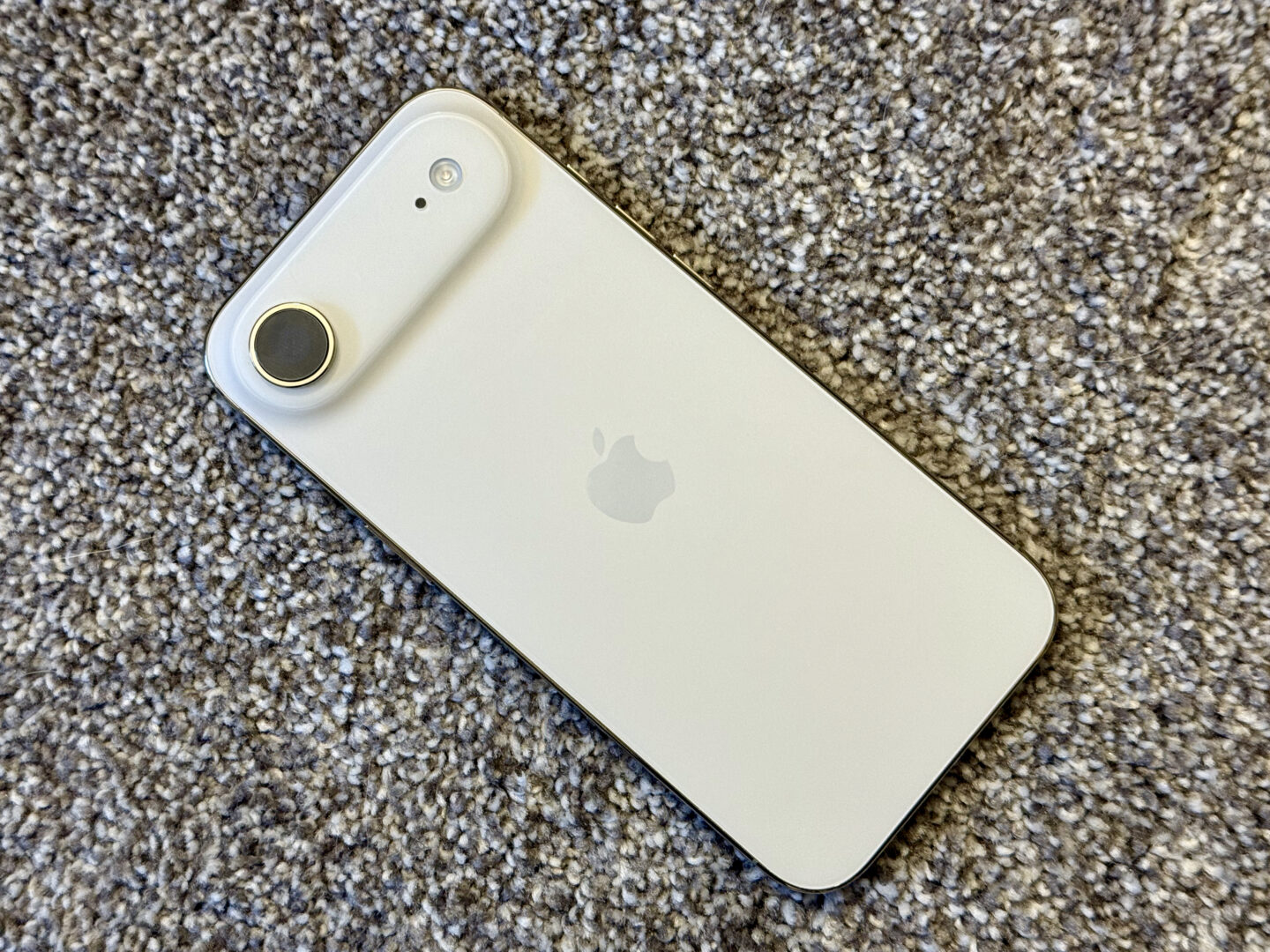
Photo: D. Griffin Jones/Cult of Mac
iPhone Air review: Battery life
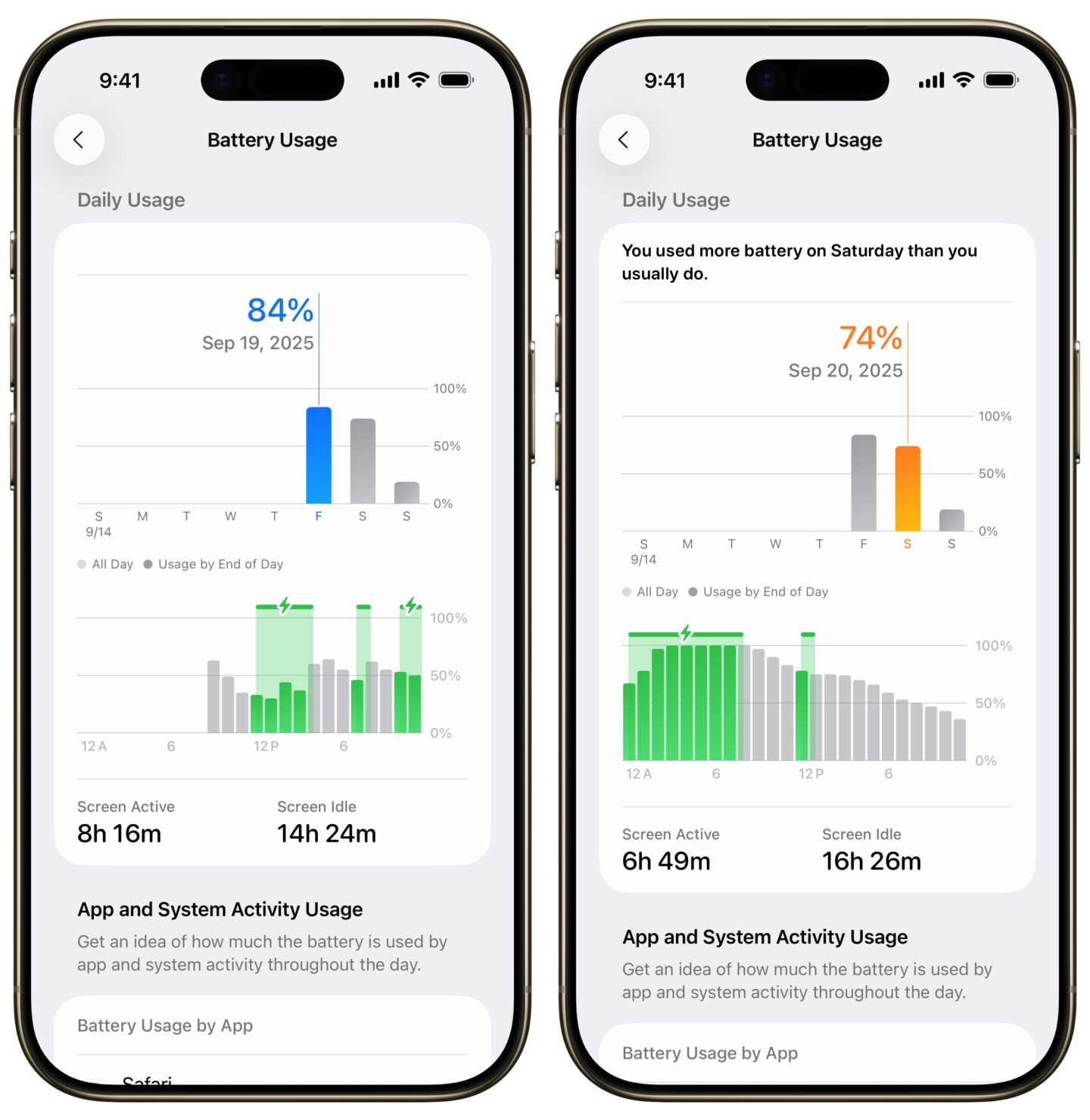
Screenshot: D. Griffin Jones/Cult of Mac
Rumors that the iPhone Air would have abysmal battery life were greatly exaggerated.
The first few days after setting up your iPhone are unfair for testing its battery. The new device is downloading all your apps, downloading your photo library and messages, and indexing its file system. Plus, you’re probably using it more, because it’s your shiny new phone.
The first three days, I woke up with the iPhone Air in the morning and basically tested every feature for this review. On Friday, I logged more than eight hours of active use while setting up the phone (with all the aforementioned background tasks happening) and only used 84% of the battery total. Saturday, nearly seven hours of use and only 74% drained. Sunday, I was mostly taking pictures and videos of the phone, and used it a touch under five hours — but only used 39% of the battery. The Air would leave me with plenty of battery to spare in my regular routine.
According to the specs, the iPhone Air has 88% of the battery capacity as the 16 Pro, but comes with iOS 26’s Adaptive Power mode enabled out of the box to make up the difference. If you’re upgrading from an old model, like the iPhone 13 Pro, you’ll get far greater battery life with the iPhone Air.
Of course, the gains would be even more dramatic if you upgrade to an iPhone 17 Pro instead. But ultimately, the iPhone Air doesn’t have bad battery life as everyone feared.
Display

Photo: D. Griffin Jones/Cult of Mac
The Air’s display is a 6.5-inch panel, which sits halfway between the iPhone 17’s 6.3-inch display and the iPhone 17 Pro Max’s 6.9-inch screen.
Personally, I considered the iPhone 16 Pro to be just a bit too big. It only fits firmly in my hand without a case, and I really have to stretch my thumb to reach the opposite side.
Surprisingly, the iPhone Air, despite being bigger, is also only a little too large. Because it’s so much thinner, I can still hold it comfortably. But in other positions, the illusion of its size is broken, and I have to two-hand it more than I’d like. I recognize I’m the odd one out in preferring small phones; the size is probably just right for a lot of people, splitting the difference between the two other sizes.
The display is also brighter, hitting an outdoor peak of up to 3,000 nits. With its smaller battery, I wouldn’t expect it to maintain that brightness for very long. But I didn’t have any trouble seeing the iPhone Air screen whatsoever on the one sunny day during my testing for this review.
Most other display specs are exactly the same as the other models in the iPhone 17 lineup. The screen is always-on and comes with ProMotion, Apple’s advanced adaptive display technology. The screen is big and bright. It supports the two-column landscape layout in supported apps; that’s how you know Apple considers it extra-large.
Review of the iPhone Air cameras

Screenshot: D. Griffin Jones/Cult of Mac
The big story here is the front-facing camera. It’s no longer a standard 12MP 4:3 sensor. It’s an 18MP square sensor. That means there’s no difference between portrait and landscape selfies — your phone can crop the sensor either way, in either orientation.
It can also use Center Stage, a feature that debuted on the iPad and Apple’s Studio Display. As more people enter the camera frame, it’ll automatically zoom out. Center Stage seems to be a “mode” that’s broken quite easily if you tap any of the zoom buttons yourself, and turning it back on is hard to reach at the top of the screen. It makes for a cool demo, but I’d probably just capture the whole frame every time. I don’t want selfies to be tightly cropped to my face; the context in the background of where you are and what you’re doing is just as important as your face.
But the iPhone Air camera has another trick up its sleeve — one that’s incredibly practical. If you’re on a FaceTime call while you’re doing chores or taking a jog, it’ll stabilize on your face. This will be a big help when FaceTiming your mom or dad, who simply cannot hold the phone still.
Dual capture lets you record video on the back camera while you record your own face on the front camera, enabling a totally new kind of video recording. I was hoping this feature would work in tandem with Center Stage, but it doesn’t seem to. It would be great if I only had to focus on what’s in front of me, and the front camera would do the work to make sure I was always in shot.
Nonetheless, these are all brilliant new features. Apple ignored the iPhone’s front-facing camera for far too long.
The rear camera
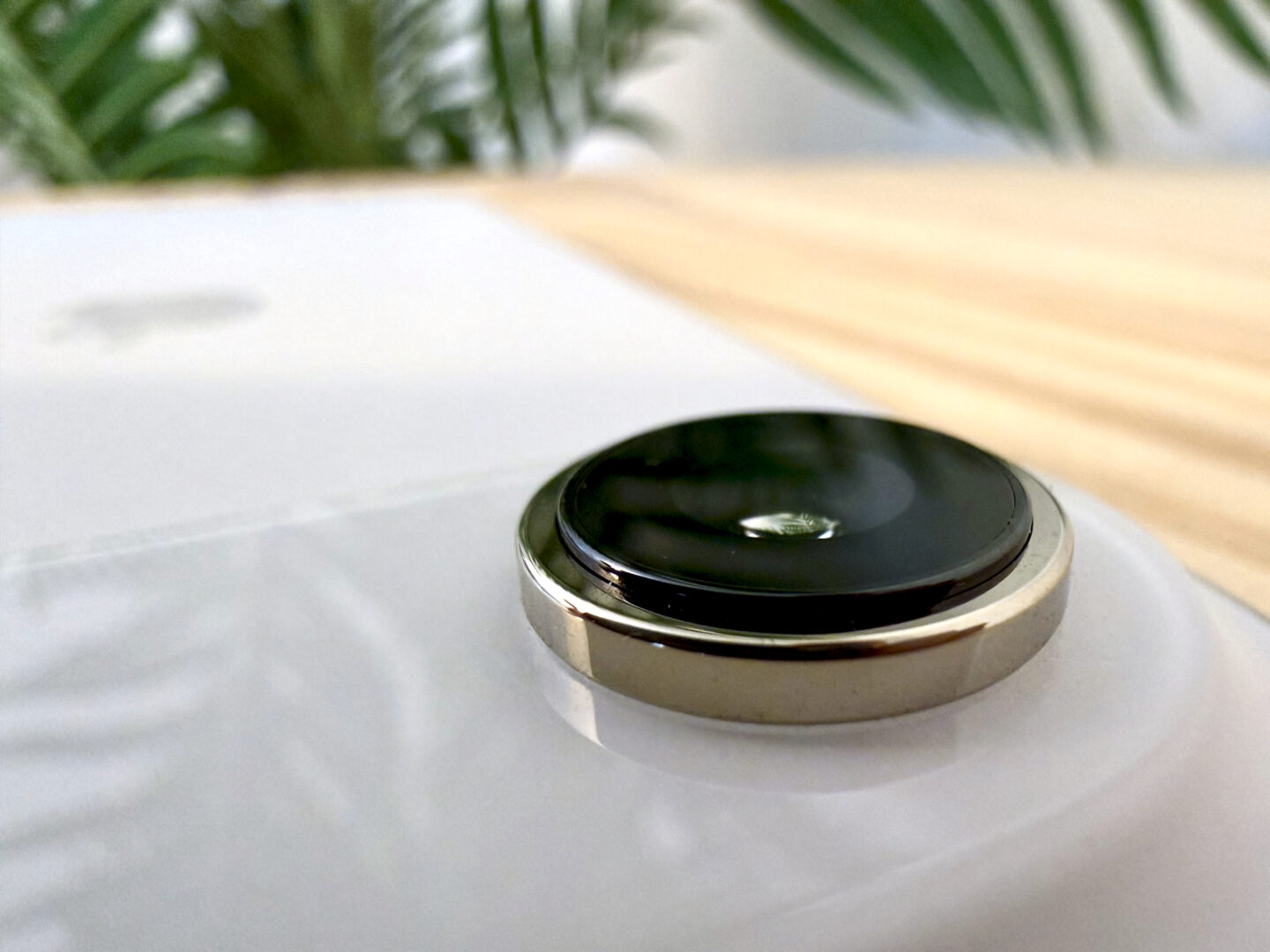
Photo: D. Griffin Jones/Cult of Mac
The single rear camera is similar to the setup on the iPhone 16e. It’s the 48MP 1× lens that’s effectively unchanged from the iPhone 16, carried over to the 17 lineup. That means you can sensor crop to a 2× zoom and take full-resolution 12MP photos, or let the machine learning and image signal processor bump it up to 24MP.
Apple says the AI upscaling built into the sensor is improved, and indeed, it seems to sharpen up hair pretty well. But Apple is still exercising caution with AI upscaling compared to its competitors, which I appreciate.
Obviously, you’re missing the telephoto zoom lens from the iPhone 17 Pro, which is disappointing not to have — especially since Apple upgraded the cameras on the Pros to a 48MP sensor as well. And I use the telephoto lens all the time. The iPhone Air also lacks the Pro’s ultra-wide lens, which removes the ability to take high-res macro photos. But that also stops that annoying thing where the phone switches to macro mode when you’re just trying to take a regular 1× photo. You win some, you lose some.
It’s also missing Cinematic mode, Dolby Vision 4K 120 video recording, ProRes RAW, genlock and Spatial recording for viewing on the Vision Pro headset. But so what? These are all features most people will never use.
The microphones … and that single speaker
Surprisingly, according to social media, the most egregious omission from the iPhone Air isn’t the additional rear cameras, but the single bottom speaker. Unlike the other models in the lineup, the Air comes with only one speaker, and it’s located at the top of the device.
Doing a direct side-by-side comparison for this review, I could hear that the iPhone Air pumps out less bass than the iPhone 16 Pro. It is definitely noticeable when you’re watching videos in landscape and the sound is only coming from one side.
A benefit is that when you’re playing media holding your phone in portrait, you don’t have to worry about covering up a bottom speaker with your thumb — there’s no speaker there to block. Of course, this means that when watching a video in landscape, you really don’t want to cover up the top side.
The absolute volume is almost as good as the iPhone 16 Pro, though, even if the audio quality is tinnier. I don’t think this should be a complete deal-breaker.
The chips

Image: Apple
The iPhone Air brings Apple silicon to a new high point. The A19 Pro chip — although it’s binned in the Air (with one fewer GPU core) and a little underclocked — is still a beast.
According to benchmarks, the A19 Pro scores 50% faster than an M1 Mac mini in single-core performance and 10% faster in multicore, with a 13% faster GPU. In only five years, Apple’s entry-level Mac chip is available all day in your pocket.
Apple says its brand-new C1X modem delivers twice the 5G performance over the C1 modem, which debuted earlier this year. It still doesn’t support 5G mmWave, but I’ve still never been to a spot that’s had it in the last five years.
Apple’s new N1 wireless networking chip handles Wi-Fi, Bluetooth and Thread radios in the iPhone Air. There’s a spot in my house opposite the Wi-Fi router that has a pretty spotty connection, and the iPhone Air worked there just as well, if not better, than the iPhone 16 Pro. Supposedly, the N1 chip improves the performance of AirDrop and other smart Continuity features, too. That’s one of those little things you’ll appreciate over time.
iPhone Air review conclusion: The new flagship
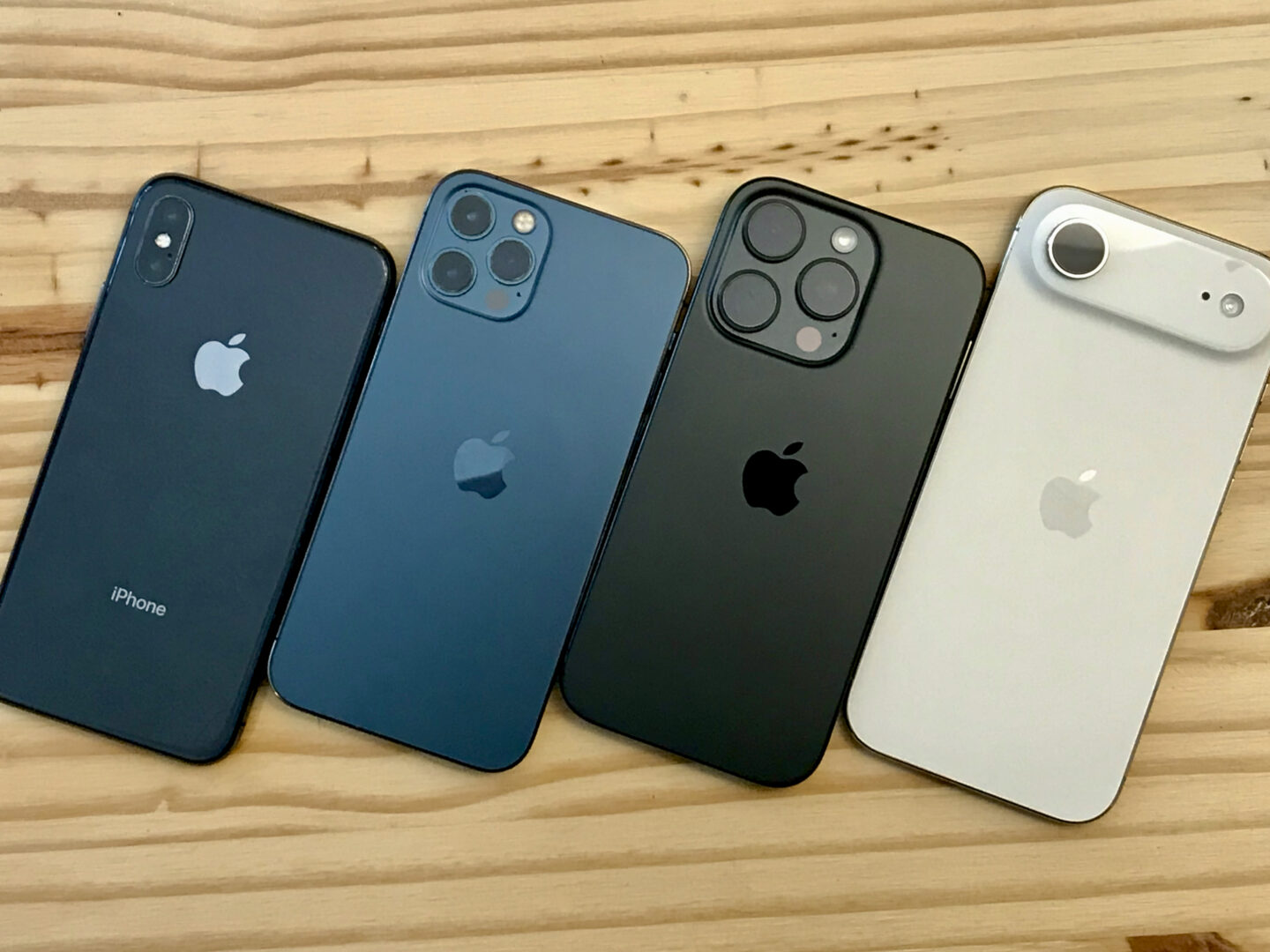
Photo: D. Griffin Jones/Cult of Mac
In the past few years, a new industrial design language emerged in Apple’s high-end products. The M1 Pro MacBook Pro, the Vision Pro, the Apple Watch Ultra and now the iPhone 17 Pro. Compare their details and you can see the family resemblance.
Apple now makes its pro products unapologetically professional, which frees the company’s consumer products from the burden of complexity. I think this is a cue that, for the first time, the iPhone 17 Pro is not the “flagship” iPhone. Apple moved it upmarket, designing it for true professional users who demand the very best cameras and audio hardware.
Speculation that the ultra-slim iPhone Air would be deeply compromised for the sake of beauty simply did not prove true. Yes, it is gorgeous and chic, but it’s also a phone I could imagine happily owning. It’s the first new iPhone in a while that actually makes the model it replaces feel old. It feels like the first MacBook Air dropping into a market of terrible, inch-thick PC laptops.
The iPhone Air is the iPhone of the year.
Buy from: Apple
Price: $999
With its radically slim design, the iPhone Air shakes up Apple's phone lineup. It comes with the same A19 Pro chip as the iPhone 17 Pro and uses Apple's N1 and C1X chips to enhance connectivity and efficiency.
- Killer new design with titanium frame is just 5.6 mm thin and weighs just 165 grams.
- 6.5-inch Super Retina XDR display with ProMotion up to 120Hz.
- Center Stage front camera for better selfies.
- Comes in four colors: space black, cloud white, light gold and sky blue.
- Battery life takes a bit of a hit.
- 48MP Fusion camera system, with 28 mm and 35 mm focal length lenses, is impressive but more limited than Pro models.
- Optical-quality telephoto lens is just 2x.
★★★★☆
Bonus: iPhone Air accessories reviews
iPhone Air MagSafe Battery

Photo: D. Griffin Jones/Cult of Mac
The new iPhone Air MagSafe Battery snaps on the back of the phone and extends its battery life by 65%. Unlike generic MagSafe batteries, it charges your phone at just the right moments when it’ll be most effective, according to Apple. It kicks in before you get too low, and charges you up to 90%.
If you want to juice up your phone as quickly as possible, you can attach the iPhone Air MagSafe Battery while simultaneously plugging your phone into a 20W (or higher) power adapter.
You can juice up the battery pack in two ways. You can charge it directly by plugging a USB-C cable into the iPhone Air MagSafe Battery itself. Or you can plug in your iPhone Air with the battery pack attached, and both will charge simultaneously. When charging the battery pack, a light on its back appears as if out of nowhere.
The iPhone Air MagSafe Battery also feels very pleasant in your hand. The back is made of the softest hard plastic you’ll ever feel. The rubber grip on the side that touches your phone makes a super satisfying thunk when it attaches. It doesn’t easily slide off, either.
Just as the bare iPhone Air is just the right width for my hands, with the MagSafe battery attached, it’s just the right width for my hands to grip it around the edge. (There’s a small gap so you can use the MagSafe Battery with the bumper case.)
Unfortunately, the battery pack’s design is so tall and wide that it isn’t compatible with any other bare iPhone (unless you have a big phone and a thick case). There is a reason for this. Just like the iPhone Air itself, the battery pack is as tall and wide as it is so that it can be made as thin as possible. In fact, teardowns show it uses what looks like the exact same battery as the iPhone Air. If Apple made a generic MagSafe battery that fit all its phones, it would have to be much thicker. And that would ruin the point of the iPhone Air MagSafe Battery
That’s probably an unsatisfying reason if you were hoping to buy one, but that is probably why Apple did what it did. If you have any other model, I recommend the Anker Nano Power Bank as a slim MagSafe battery.
Created exclusively for the super-slim iPhone Air, this equally slender battery pack provides up to a 65% additional charge to get through those long days.
- Smart charging for maximum efficiency.
- Feels great in your hand.
- Can juice up smaller accessories via its USB-C port.
- Doesn't work with other iPhone models.
iPhone Air Bumper
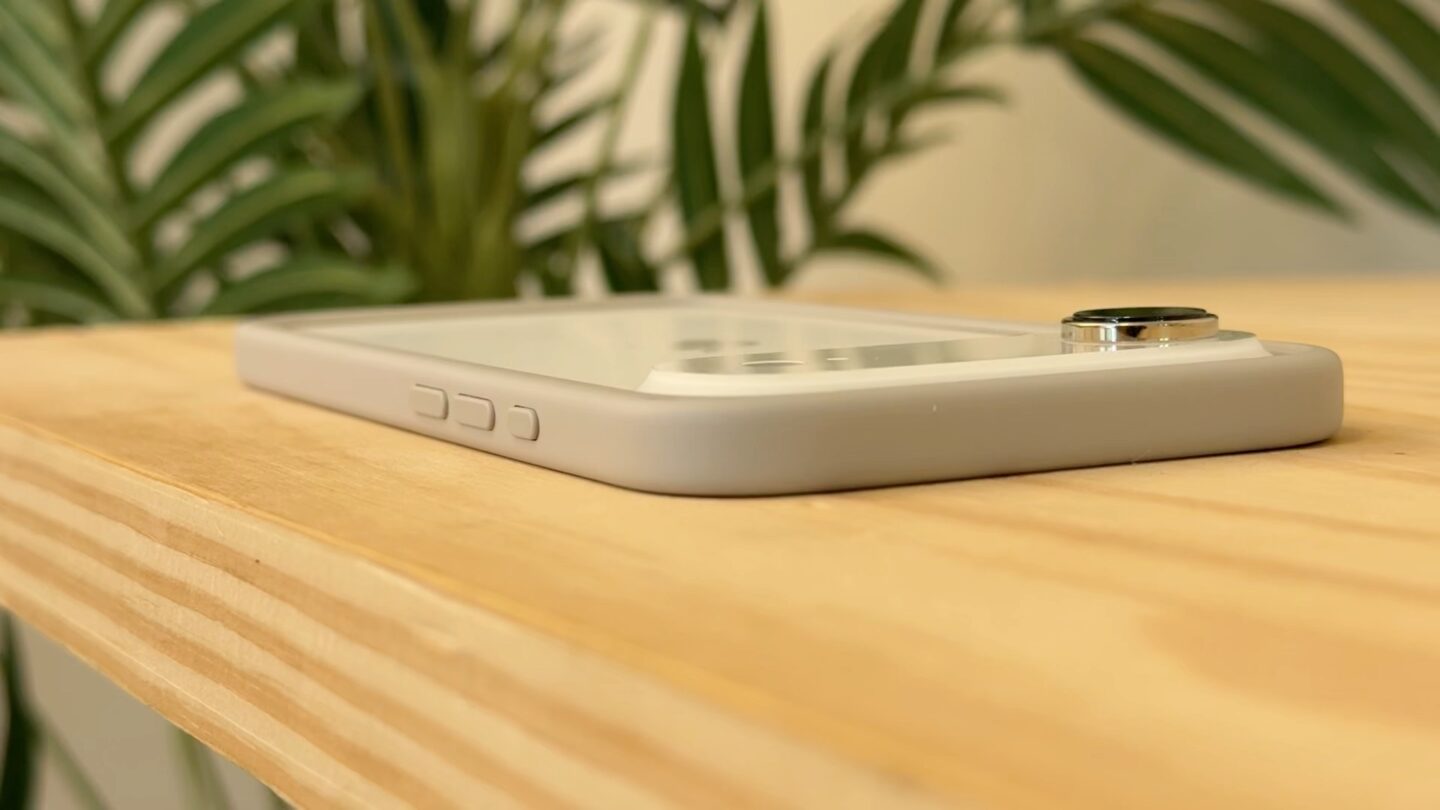
Photo: D. Griffin Jones/Cult of Mac
Somehow, the bumper case returned. The idea of a bumper case is that it protects the part of the phone most likely to hit the ground — the corners — while letting your hands touch the bare back of the phone and appreciate its thinness.
Unfortunately, the iPhone Air Bumper fails at both of these tasks.
While it protects all four corners of the front, it doesn’t protect the upper two corners on the back. The camera lens and plateau stick out beyond the bumper.
I know Apple wants the iPhone Air Bumper to appear as a beautiful polycarbonate band that’s completely uniform in thickness. But the design ignores the reality that it isn’t 2010 anymore. Phones aren’t uniform in thickness.
The bumper is also surprisingly bulky. You can still appreciate the iPhone Air’s thinness by touching the back of the phone while you touch the front, but the bumper itself is so thick that it ultimately makes the phone feel big. And that ruins the whole point of this phone.
I would like the iPhone Air Bumper a lot more if it protected the plateau and the camera, and if its edges were a little thinner. I really wanted to like the bumper, but as it stands, it makes the phone too wide for people who usually go caseless, and it doesn’t offer enough rear protection for people who need a case.
Designed exclusively for the new iPhone Air, this is a throwback to the iPhone 4's bumper case. It protects the super-slim phone's edges while showcasing its back glass.
- Lets you see what color your iPhone Air is.
- Fits like a glove.
- Limited number of colors (black, light gray, tan, light blue).
- Doesn't protect iPhone Air's glass back.
iPhone Air Clear Case
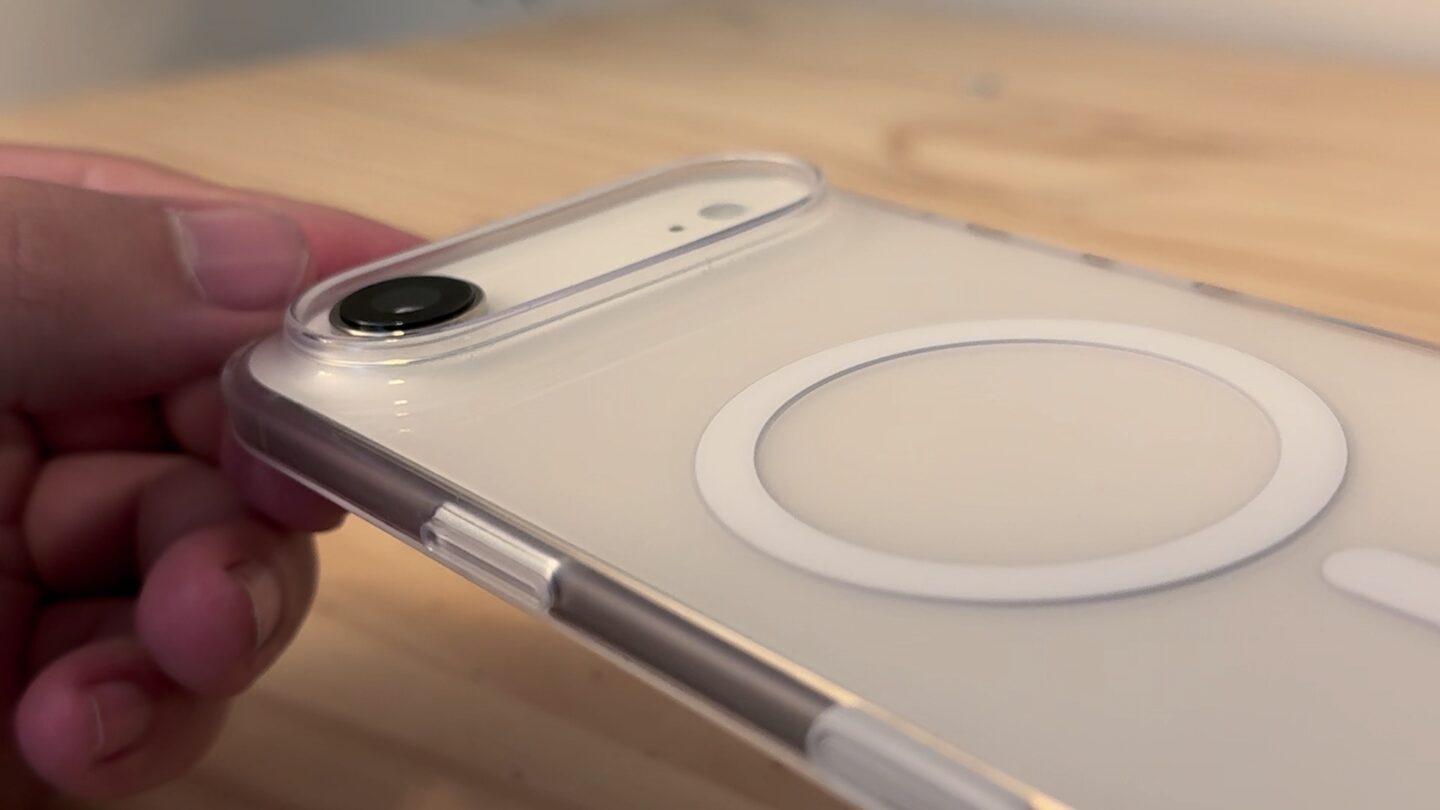
Photo: D. Griffin Jones/Cult of Mac
Apple’s Clear Case offers a greater balance of tradeoffs. It wraps all the way around the iPhone Air, including the plateau and camera lens, while adding less than a millimeter of thickness to the back. Inside the case, the iPhone Air’s body is still thinner than the bare iPhone 6.
The Clear Case comes in two colors, frost and shadow. Frost is completely clear with a white accent. Shadow is a bit darker with a black accent. Pro tip: Only buy the shadow case if you’re getting the black phone.
Thin, light and grippy, this case is made of "optically clear polycarbonate and flexible materials." Plus, Apple says "all materials and coatings are optimized to prevent yellowing over time," a common problem with low-quality clear cases.
- Scratch-resistant coating on both sides.
- Sapphire crystal coupled to a conductive layer plays nice with Camera Control.
- Built-in magnets for optimal MagSafe functionality.
- More expensive than some similar-looking competitors.
Crossbody Strap

Photo: D. Griffin Jones/Cult of Mac
Apple’s Crossbody Strap is a new accessory that lets you wear your iPhone around your shoulder. These are super-convenient if you don’t have pockets and you don’t want to stow your phone in a bag. It also makes your phone harder to pickpocket or snatch out of your hands on a city street.
The Crossbody Strap is perhaps most useful on day trips when you want the fastest possible access to your camera. It removes the friction of even pulling the phone out of a pocket. It’s kind of annoying at all other times: around the house, in the car, at my desk.
It’s also a little finicky to set up. You have to take off your phone case, carefully thread the Crossbody Strap’s tiny loops through the holes in your phone case, then clip the strap on. This isn’t something you can casually take on and off; if you’re not sure you’ll want it all the time, you should leave it attached to a second case. I’m surprised Apple didn’t engineer a smarter clip mechanism; it’s a piece of string and a metal loop.
The strap itself is loaded with slim, flexible magnets so that it’s always flush and tidy, even in the areas where it doubles over itself. It’s also a little finicky resizing the strap to make sure it’s flush, but it’s a neat trick once you get it right.
The build quality is, of course, top-tier. This is clearly the same company that has now spent more than 10 years making excellent Apple Watch bands. The Crossbody Strap’s fabric feels soft, super-strong and perfectly smooth. The little metal snaps have polished, chamfered edges and make a very satisfying click. The opening in the little resizing loops is exactly sized for the fabric. If you try looking for imperfections, you will need to look very close.
This accessory isn’t unique to the iPhone Air. It comes in matching colors for the whole iPhone 17 lineup, and several of Apple’s iPhone cases come with loops at the bottom. I imagine the loops will work with some third-party cases as well.
Apple's new Crossbody Strap works with select Apple iPhone cases to give you a hands-free option. Made from 100% recycled PET yarns, the narrow strap features embedded magnets with stainless steel sliding mechanisms so you can easily adjust its length (from 81.9 inches to 42.5 inches).
- Great for day trips where you want to keep your iPhone easily available.
- Beautifully designed.
- Comes in 10 colors.
- Not great for everyday use.
- Not easily removable from iPhone case.
Apple did not provide Cult of Mac with review units for this article. See our reviews policy, and check out more in-depth reviews of Apple-related items.
![If you touch an iPhone Air, you’ll want to buy it immediately [Review] iPhone Air floating in front of a fake palm tree in a beige room](https://www.cultofmac.com/wp-content/uploads/2025/09/iPhone-Air-Featured-Image-1020x574.jpg)
